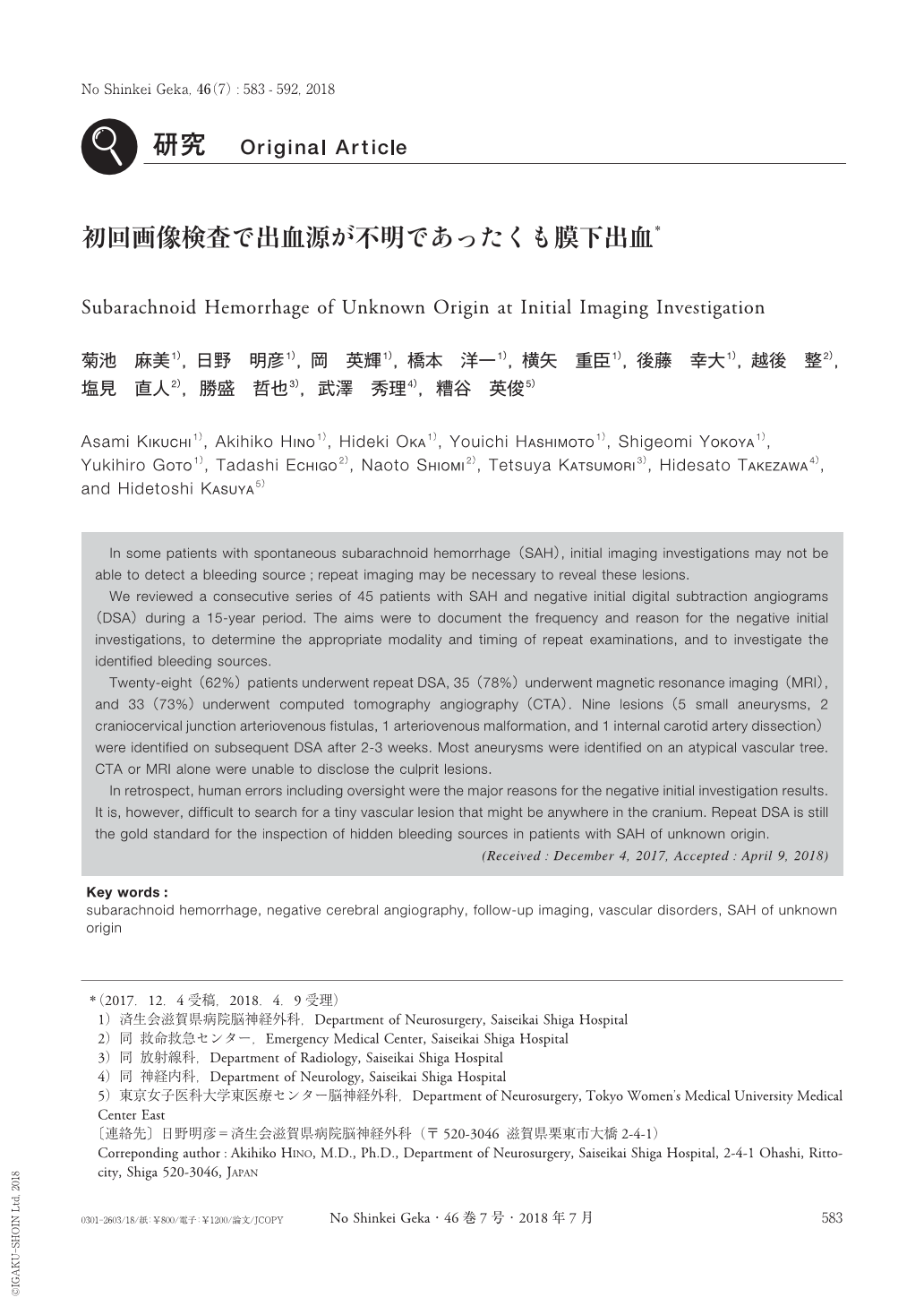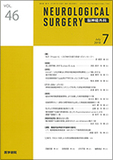Japanese
English
- 有料閲覧
- Abstract 文献概要
- 1ページ目 Look Inside
- 参考文献 Reference
Ⅰ.はじめに
外傷を除けば,くも膜下出血(subarachnoid hemorrhage:SAH)のほとんどは脳動脈瘤破裂に起因する.徹底的な出血源の検索は不可欠であるが,近年の画像診断法の進歩にもかかわらず,非外傷性SAHの4〜22%では,初回の画像検査で出血源を特定できない.文献的には,画像検査を繰り返すことで,新たに1〜12.5%に出血源が特定されるというが,最終的にはおよそ10%で出血源が不明(SAH of unknown etiology)のままに終わる13).
Rinkelら9)は,SAHが中脳周囲に限局するものをperimesencephalic type(PM type)と名付け,破裂動脈瘤が出血源となることはほとんどなく,予後良好で,血管撮影を繰り返す必要はないと記載した.しかし,その一方で,このタイプの出血でもおよそ10%に破裂動脈瘤が潜在し,その見逃しが重大な結果をもたらすとする報告もある1,6).
日常臨床では,初回の画像検査で出血源を特定できない場合,どのような検査をどのタイミングで,いつまで繰り返すべきか,ということが大きな問題になる1,2,5,6,12).今回われわれは,初回検査で出血源を特定できなかった非外傷性SAHについて,その臨床的特徴と経過,対策を検討した.
In some patients with spontaneous subarachnoid hemorrhage(SAH), initial imaging investigations may not be able to detect a bleeding source;repeat imaging may be necessary to reveal these lesions.
We reviewed a consecutive series of 45 patients with SAH and negative initial digital subtraction angiograms(DSA)during a 15-year period. The aims were to document the frequency and reason for the negative initial investigations, to determine the appropriate modality and timing of repeat examinations, and to investigate the identified bleeding sources.
Twenty-eight(62%)patients underwent repeat DSA, 35(78%)underwent magnetic resonance imaging(MRI), and 33(73%)underwent computed tomography angiography(CTA). Nine lesions(5 small aneurysms, 2 craniocervical junction arteriovenous fistulas, 1 arteriovenous malformation, and 1 internal carotid artery dissection)were identified on subsequent DSA after 2-3 weeks. Most aneurysms were identified on an atypical vascular tree. CTA or MRI alone were unable to disclose the culprit lesions.
In retrospect, human errors including oversight were the major reasons for the negative initial investigation results. It is, however, difficult to search for a tiny vascular lesion that might be anywhere in the cranium. Repeat DSA is still the gold standard for the inspection of hidden bleeding sources in patients with SAH of unknown origin.

Copyright © 2018, Igaku-Shoin Ltd. All rights reserved.


